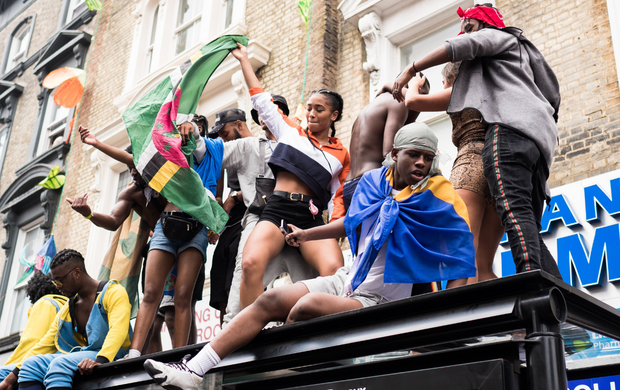We do like a street party – take carnivals alone! No doubt everyone’s heard of the Notting Hill Carnival, but if you’re not a Londoner, how about the Leeds West Indian Carnival, the Wells Carnival, or the Aldeburgh Carnival? Perhaps you’re closer to the Leicester Caribbean Carnival or the Swanage Carnival, or Liverpool’s Brazilica samba carnival? Rest assured, all and more are coming to a street near you this summer.
Whether you’re dealing with a carnival, an Edinburgh Hogmanay or a major sporting event, if you’re a homeowner in the vicinity of such an event, you may want to know what you can do in advance to minimise any potential issues you may face from a large-scale public event.
Problems from public events
When streets are very crowded, people tend to spill over to somewhere, often someone’s garden or porch. With lots of boisterous people, probably enjoying a drink, there’s an obvious risk of damage to windows, walls and fences – even if unintentional.
People who have had a few drinks may be friendly, but they may not. You could end up dealing with the aftermath of a fight, or you may end up in a confrontation if, for example, you ask people to move on and they refuse.
A particularly common problem, unfortunately, is the reveller who can’t find a toilet or be bothered with the queue, and instead decides to use your garden or wall.
Am I at risk?
The first thing you have to do is figure out whether you are in a heavily affected area. Any sort of public event should have a website, probably with some kind of map showing where the event is happening. Local authorities are also a useful source of information, even when they aren’t the event organiser.
If you live near the Notting Hill Carnival, for example, the local borough council has a general info page and also an even more useful page with a list of affected streets and also maps detailing road closures, and parking suspensions and so on. Councils will almost always detail closures and suspensions on their website, from which you can work out where the crowds are expected to be. Transport for London has a works and events page, as will most bodies organising public transport.
How to protect your home from public events
If you are going to be in the affected area of a significant event, there are two recommended courses of action to take – keep people away from the property altogether with temporary fencing, and make it more resistant to damage by covering windows and doors.
It’s worth noting that it’s a good idea to think ahead. SafeSite Security Solutions has been fully booked to protect properties along the Notting Hill Carnival route for some time.
How to Protect Homes
One approach to securing homes is to cover windows, especially, and possibly doors with steel or timber screens. Broadly, timber screens are the standard solution for medium-term absence or need for protection, with metal often selected for longer-term requirements.
Neither is ideal for short-term needs like street events, however. Timber is faster to install than steel, but does take several hours, and inevitably does require exteriors to be screwed into existing frames.
Temporary security fencing.
Temporary fencing can be hired affordably for short periods, such as during an event. One common use is to make access to a garden more difficult. Fencing off a garden will generally make access to your home harder, though obviously, this is dependent on the layout. A short piece of security fencing can also be placed parallel to the kerb, in front of a porch or similar entryway to a building, keeping passers-by on the street or pavement, rather than next to your doors and windows.
Temporary fencing is the quickest type of barrier to installing, being light, and attached quickly with ties to existing barriers or buildings. Security gates can easily be installed to allow exit and entry, so fencing is considered the standard solution for very short-term protection.








